History
From the 1970s, driven by tax incentives, the state of Mato Grosso has converted huge areas of Amazon and cerrado forest into large-scale agro-pastoral systems. Most of the unoccupied land was in remote, inaccessible and protected areas. The types of protected land depend on land use. Thus 83.77% of permanently flooded land is protected, while only 3.87% of open treed savanna is protected.
The Araguaia State Park was created by law 7.517 of 28 September 2001 with an area of about 230,000 hectares (570,000 acres). The objectives were to protect water resources, allow movement of native fauna, preserve a representative sample of ecosystems in the area and support controlled public use, education and scientific research. It was to be administered by the State Environment Foundation (FEMA). The park was classed as IUCN protected area category II (national park).
At time of creation five years maximum were allowed for FEMA to prepare a management plan. The park was modified by law 8.458 of 17 January 2006. The management plan was published in 2007. It was approved in December 2008.
On 27 June 2011 the state government published a law authorizing an "exchange" with the Fundação Nacional do Índio (Funai) that would bring the Xavante people of the Maraiwatsede Indigenous Territory (TI) into the park, and regularize ownership by squatters in the TI. Funai responded that it had no interest in the exchange, which was unconstitutional since indigenous territory is inalienable. [lower-alpha 1]

The Emas National Park is a national park and a UNESCO World Heritage Site in the states of Goiás and Mato Grosso do Sul in Brazil.
The Xingu Indigenous Park is an indigenous territory of Brazil, first created in 1961 as a national park in the state of Mato Grosso, Brazil. Its official purposes are to protect the environment and the several nations of Xingu Indigenous peoples in the area.
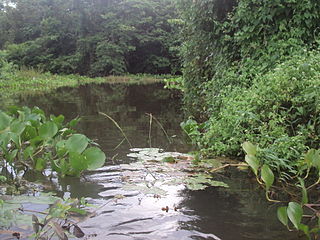
The Pantanal Matogrossense National Park is a national park in the state of Mato Grosso at the border to Mato Grosso do Sul, Brazil.

Serra da Bodoquena National Park is a national park in the state of Mato Grosso do Sul, Brazil.
Carste de Lagoa Santa Environmental Protection Area (Portuguese: Área de Proteção Ambiental Carste de Lagoa Santa is a protected area in Minas Gerais, Brazil.
Rio Ronuro Ecological Station is an ecological station in the state of Mato Grosso, Brazil. It protects an area of contact between Amazon rainforest in the north and Cerrado semi-deciduous forest in the south. Since being created in 1998 it has been reduced in size and has suffered from significant deforestation.

The Campos Amazônicos National Park is a National park in the states of Rondônia, Amazonas and Mato Grosso, Brazil.
Sucunduri State Park is a state park in the state of Amazonas, Brazil.
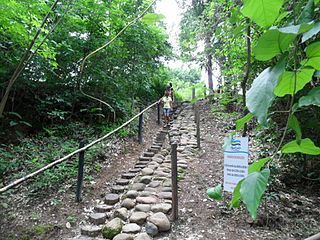
The Águas Quentes State Park is a state park in the state of Mato Grosso, Brazil
The Serra de Santa Bárbara State Park is a state park in the state of Mato Grosso, Brazil. It preserves a unique environment where the Amazon rainforest, pantanal and cerrado meet, and holds many endemic or endangered species.
The Mirador State Park is a state park in the state of Maranhão, Brazil. It protects the headwaters of an important source of water for communities in the state, including the state capital. Its own protection from illegal logging, slash-and-burning, grazing and hunting is underfunded.
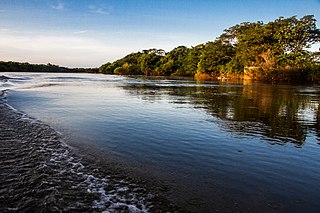
The Cantão State Park is a state park in the state of Tocantins, Brazil. It protects the Cantão wetlands, an area of igapó flooded forest in the ecotone where the Amazon rainforest merges into the cerrado.

The Cristalino State Park is a state park in the state of Mato Grosso, Brazil.
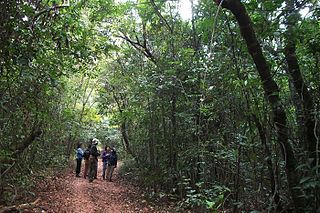
The Matas do Segredo State Park is an urban state park in the state of Mato Grosso do Sul, Brazil. It protects an area of cerrado forest.
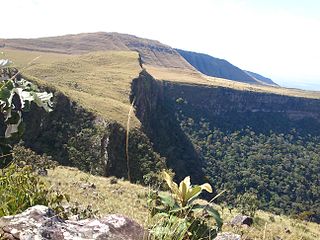
The Serra Ricardo Franco State Park is a state park in the state of Mato Grosso, Brazil. It protects the edge of a plateau on the border with Bolivia in the region of transition from cerrado to Amazon rainforest. The park has been poorly protected and is badly degraded in areas by deforestation and conversion to pasturage. It is threatened by illegal squatters, hunting and burning.

The Serra Azul State Park is a state park in the state of Mato Grosso, Brazil. It protects a mountainous area of cerrado forest and contains slopes that are used for paragliding. The park contains the geodetic center of Brazil.
The Nascentes do Rio Taquari State Park is a state park in the state of Mato Grosso do Sul, Brazil. It protects the headwaters of the Taquari River in an area in the transition between the cerrado and pantanal biomes.
The Dom Osório Stoffel State Park is a state park in the state of Mato Grosso, Brazil. It protects an area of the cerrado biome.

The Prosa State Park, formerly the Parque dos Poderes, is an urban state park in the state of Mato Grosso do Sul, Brazil. It protects a remnant of cerrado vegetation, and is home to a wildlife rehabilitation center.
The Upaon-Açu/Miritiba/Alto Preguiças Environmental Protection Area is an environmental protection area in the state of Maranhão, Brazil
This page is based on this
Wikipedia article Text is available under the
CC BY-SA 4.0 license; additional terms may apply.
Images, videos and audio are available under their respective licenses.












